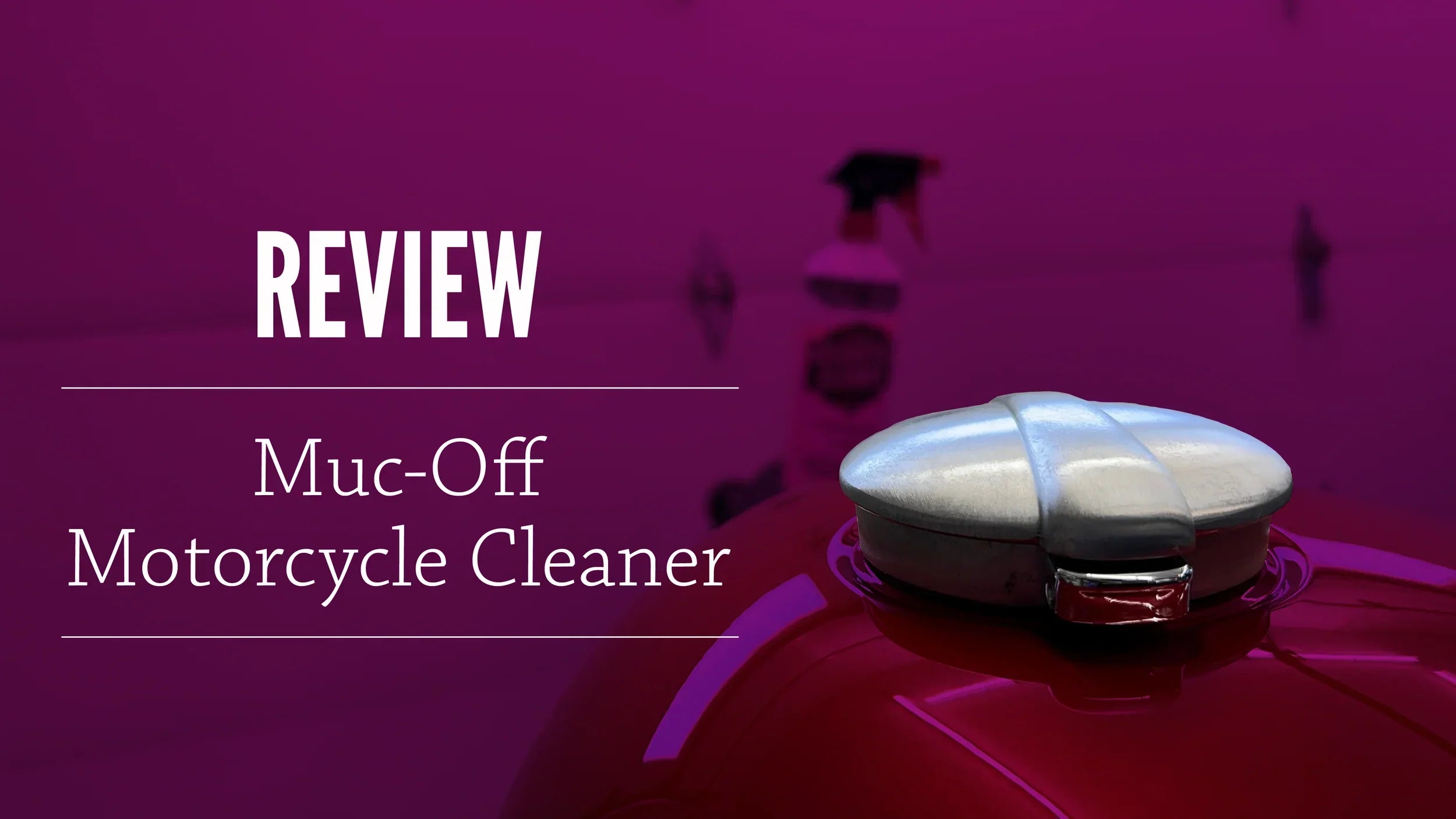
Muc-Off Motorcycle Cleaner Review: Just Don't
We make things that work better and last longer. Our products solve real problems with clean design and honest materials.
You’ve probably seen the ads by now, maybe on the Supercross or World Superbike circuts, Muc-Off is definitely gaining traction in motorcycle circles. I don’t know how often Scott Redding washes his World Superbike BMW, but I was willing to give it a shot on my personal bike. A few clicks of the keyboard to that massive online store and within a few days it was at my door. Is it any good? Not if you like the finish on your non-painted surfaces. See for yourself in the video below.
Our Test Bike
Our Northern California winter was abysmal by our standards. Inundated with rain and high winds, many of our usually epic mountain roads were covered with debris. We decided to brave the sometimes treacherous conditions to shake off our sedentary rust and seek out the few remaining fun twisties. Unfortunately the result was not what we had imagined and the bike was the dirtiest it had ever been.
Detailing a particularly dirty bike is no fun. I wanted to like this product, but I also like(d) the finish on my Triumph Speed Twin’s many aluminum and rubber parts. I had no idea using this product would lead to problems. I’m a stickler for a clean bike, but by anyone’s standards, this should not be an acceptable outcome. They do say that any aftermarket pieces should be tested in an inconspicuous area, but otherwise the product is safe for all factory finishes. Not a problem here. This is about the most stock Speed Twin around. Every nut and bolt is straight from Triumph.

Our beloved (and bone-stock) ‘19 Triumph Speed Twin and the grime of a single winter ride.
Using Muc-Off
The product calls for you to follow four basic steps, 1) wet the bike, 2) apply the product, 3) wait, and 4) hose off. This is a pretty appealing sequence. My bike was the dirtiest it had ever been in its brief four-year lifespan and I was not looking forward to taking a rag and cleaner to every nook and cranny. The more I could hose off, the better.
Wetting the bike is about as basic as it gets—obviously no problems there. Spraying on the product was also straightforward. The sprayer functions well and applies the product with a bit of foam to it that clings to the bike’s surfaces. But I was skeptical it could truly do the do on such a dirty bike. I decided to take a damp microfiber wash mitt to the easy to reach surfaces; the tank, fenders, gauges, and accessible parts of the wheels. My initial reactions were positive. The product lubricated the surfaces well, which is great for avoiding contaminant scratches. After the recommended dwell time—which included the scrubbing time—I thoroughly rinsed the bike.

Applying the product is as basic as it gets.
Unfortunate Results
Given my region’s notoriously hard water, I decided take the extra step and dry my bike, at least the painted parts to avoid any water spots. As I did this i noticed that all the surfaces I didn’t go over with my mitt had a thin layer of dirt—better, but still unacceptably dirty. I needed to go over every surface with my damp towel to clean them off. This is what I was trying to avoid, but at least it wasn’t as bad as when I started. As I proceeded, going over the smaller parts, something disturbing caught my eye. My previously perfect brushed aluminum gas cap cover now had an oddly etched finish. And so did the Speed Twin badges on the side covers. And the throttle body covers. Even the rubber fork gaiters looked dried out and gray.



As you can see above, I shot video of the entire process. To be fair to Muc-Off, I kept my video private for a couple days and provided them with my observations and a YouTube link. I gave them a couple days to respond and I heard nothing back from them so I made the video public and tagged them. Still no comment from Muc-Off. If they do respond, I will be sure to update this page as well as the description on my video, but as of this moment I have no reason to expect they will.
In Summary













